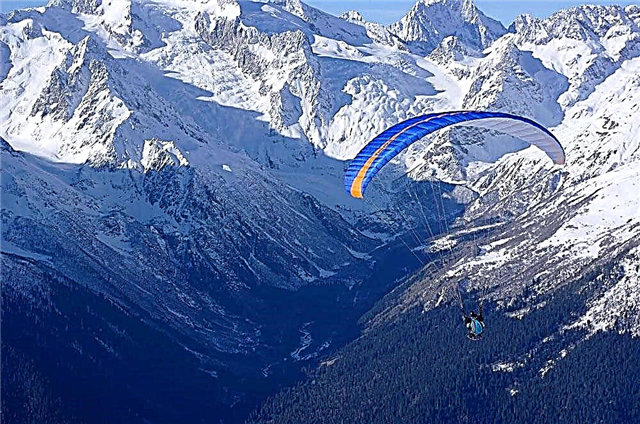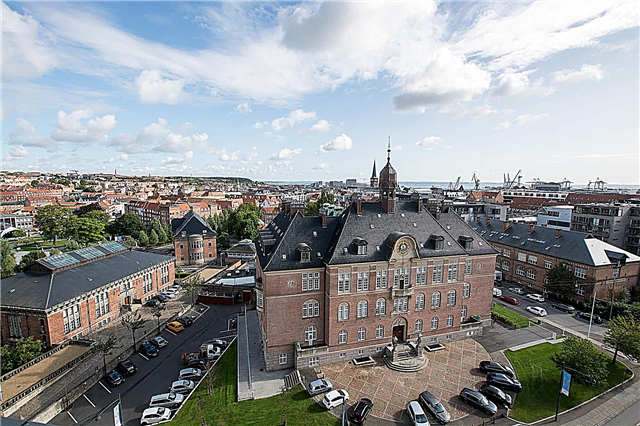Saratov region in the southern part of Russia was founded in 1936. There are 18 cities on its territory, 11 of which are included in the list of historical cities of Russia. These include Balashov, Pugachev, Saratov, Petrovsk, Khvalynsk, Marks, Volsk, Novouzensk, Atkarsk, Engels, Balakovo. In terms of industrial production, the region occupies one of the leading places in the Volga region. 2000 enterprises are concentrated here. Farms are developing.
The region has more than 300 architectural monuments, about 3 thousand archaeological and 124 natural monuments, 27 state museums. In addition to cultural and educational, ethnic tourism is developing, associated with the history of the Volga Germans. Event tourism is also popular - a number of music, national, theater and film festivals are held annually.
The largest cities of the Saratov region
List of the region's largest cities in terms of population.
Saratov
Among the 20 largest cities in the country. It was founded in 1590 in the form of a guard fortress. Since 1780 - in the status of a city. A large economic and cultural center of the Volga region. The city has several railway stations, a river port, an airport. Among the attractions are the Nikitin Brothers Circus, Victory Park, a two-tiered embankment, the N. G. Chernyshevsky House-Museum, the National Village Museum, and the Soothe My Sorrows temple.
Population - 830,155 people (2021).

Engels
Located on the Volga coast. It is connected with Saratov by a 3-kilometer road bridge. Traces its history from the Pokrovskaya Sloboda, formed in 1747. In 1914 it became a city with the name Pokrovsk. Since 1931 - Engels. A large industrial center, transport engineering is especially developed. Location of the airbase of the Russian Aerospace Forces. In the area where the first cosmonaut landed, the Gagarin Field complex was created.
Population - 226 thousand people.

Balakovo
A city on the Volga, local “Venice”. The Volga branches, the Balakovka river and channels form here numerous bays, islands, stretches. Lots of places to stay. The date of foundation is 1762. City - since 1911. Famous for the presence of hydroelectric power plants, nuclear power plants and thermal power plants. The buildings of the 19th century are mesmerizing with their architecture - chic merchant mansions and estates. Particularly noteworthy is the Maltsev estate, which looks like a palace. The house-museum of V.I.Chapaev is also of interest.
Population - 189 thousand people.

Balashov
A city on the Khoper river. Founded in the 17th century. Railway junction, there are 3 stations. The city-forming enterprise is a large textile mill. The popular route "Ruby Line" passes through the historical center, which includes 29 objects - architectural monuments, parks, unique buildings. Of interest are the Museum of Local Lore, the Monument of Glory, the Cathedral of the Archangel Michael, and a number of monuments.
Population - 76 thousand people.

Volsk
Located on the Volga coast, near the picturesque chalk mountains. It was declared the City of Labor Glory. It was first mentioned as the Malykovskaya settlement in 1699. Since 1780 - the city of Volgsk, later renamed to Volsk. Center of the cement industry. It is distinguished by a number of perfectly preserved buildings, stone and wooden, built by St. Petersburg craftsmen in the style of Russian classicism at the beginning of the 19th century.
Population - 63 thousand people.

Pugachev
Located on the coast of the Big Irgiz. It began with the Mechetnaya settlement, created in 1764. Since 1835 - the city of Nikolaevsk. It received its current name in 1918. Railway station. Among the attractions are the V. Chapaev Museum, the Resurrection Church and the 19th century Schmidt trading house. The first solar power plant in the region was opened here. In the vicinity there is a picturesque "Tulip Steppe" - a natural monument.
Population - 40.9 thousand people.

Rtishchevo
Located on the Olshanka River. Leads history from a small village founded in the 17th century. Since 1727 it was named in honor of the landowner Rtishchev. City - since 1925. Large railway junction, there are 3 stations. A natural attraction is the unique Krasnaya Glinka ravine with a deposit of red ocher. Of interest are the monument-steam locomotive, the Alexander Nevsky temple, the historical buildings of the locomotive depot and the station.
Population - 39 thousand people.

Marx
The settlement on the banks of the Volga was founded by German colonists in 1765. It was originally called Yekaterinenstadt. In 1918, the city received the status of a city and the name Marksstadt. Since 1942 - Marx. The most famous enterprise is the Marksovsky brewery. Among the attractions - a monument to Catherine II, a museum of local lore, a city park, war memorials. There are many tourist centers and health camps in the vicinity.
Population - 31.5 thousand people.

Petrovsk
City on the Medveditsa River. Leads history from the construction of the fortress in 1698. County town - since 1780. Among the large enterprises there is an electromechanical plant and an auto parts plant. The architectural appearance of the city is adorned with temples and buildings erected more than a century ago - the station, the fire station, the Theological school, the women's gymnasium, the estate of General Ustinov. One of the main monuments - to the founder of the city Peter I.
Population - 28.9 thousand people.

Atkarsk
Located at the confluence of the Medveditsa and Atkara rivers. Founded in 1699 as a soldier's settlement. In the status of a city - since 1780. Of interest are the historical buildings of the past centuries - the station, the post office, the city council, the women's gymnasium, numerous monuments and memorials. The city has a park-museum, founded in 1813, as well as an arboretum and a popular nursery for decorative cultures.
Population - 25 thousand people.

Krasnoarmeysk
Located on the river Goly Karamysh. It has been known since 1765 as a colony of German settlers named Balzer. In the status of a city - since 1918. Renamed to Krasnoarmeysk in 1942. The only narrow-gauge railway in the region, which belongs to a ceramics factory, operates here. Of interest are the mansions of old German buildings made of local bricks, the local history museum, and war memorials.
Population - 23 thousand people.

Ershov
It was founded during the construction of the railway in 1893 as a station settlement. Located on the Maly Uzen River. In the status of a city - since 1963. Large railway and automobile junction. Agriculture is developing. Local attractions include monuments to the heroes of the Civil War and the Second World War, St. Nicholas Church, the "House of Messrs. Machinists" - an architectural monument of the beginning of the last century.
Population - 19.5 thousand people.

Novouzensk
It is located near the confluence of the Chertanly River with the Bolshoy Uzen River, 20 km from the border with Kazakhstan. It was founded by Old Believers in the form of a small village Chertanla in 1760. The status of the city and the name Novouzensk were obtained in 1835. A number of historical and architectural monuments have survived in the city - the buildings of the railway station, the zemstvo hospital, a boarding school, merchants' houses, Chervov's mill, a water tower, etc.
The population is 15.7 thousand people.

Kalininsk
Located on the coast of the Balanda River. The village, founded in 1680 by people from the Don, had the same name. Since 1939 - in the status of a workers' settlement. In 1962 it was transformed into a city and named after M. Kalinin. Among the large enterprises of the city are a rubber goods plant, a milk cannery. Several merchant mansions have survived, which today house various organizations.
The population is 15.8 thousand people.

Red Kut
City on the river Eruslan. It was founded as a small village at the beginning of the 19th century. Since 1938 it has been a workers' settlement. The status of the city was received in 1966. The city has a reinforcement, electromechanical factories and a food processing plant. Among the attractions are the Museum of Local Lore, the Trinity Church of the 19th century, a monument at the site of the landing of the spaceship under the control of G.S.Titov in 1961.
Population - 14.5 thousand people.

Khvalynsk
It was founded in 1556 as a guard post on the Volga. In 1780 it was transformed into a county town. Recreational center of the region. It is surrounded by the picturesque Khvalynsky mountains with many healing springs. The main attraction is the national park of the same name and the ski resort on its territory. Of interest are the museums of the poet S. Narovchatov and the artist K. Petrov-Vodkin, as well as an art gallery.
Population - 12.4 thousand people.

Arkadak
Located near the confluence of the Bolshoi Arkadak River and the Khoper River. Leads its history since 1721. The most striking architectural monument is the active Ascension Church, erected in 1822. Among the preserved pre-revolutionary buildings, it is also worth noting the distillery and Epifanov's mill. In the vicinity of the city, in the picturesque Khopra valley, the Arkadak reserve has been created.
Population - 11.8 thousand people.

Sheikhans
A small town on the banks of the Volga, closed until recently. Leads history since 1820, when the count's estate of the Orlov-Denisovs was erected on this place. Its main buildings have survived to this day; a museum and an officers' house are open here. The Shikhan includes a military town where a chemical research institute, a pilot plant, a military chemical training ground, and a military unit are located. In January 2019, the closed status was removed from the city.
Population - 5600 people.

Bazaar Karabulak
One of the regional centers of the Saratov region, an urban-type settlement. Located on the Karabulak River. It was founded in 1692 as a sentry post. Since 1939 - in the status of urban settlement. The famous cannery is located here. Among the attractions - the temple of 1877, memorials to the heroes of the Civil and Great Patriotic Wars. Bazarno-Karabulak arboretum was created nearby, where exotic plants are studied.
Population - 9500 people.

Alexandrov Gai
A large village on the Bolshoy Uzen River, near the border with Kazakhstan. Founded in 1694. The architectural appearance of the village is decorated with former mansions of local industrialists and merchants. Today they house the administration, the editorial office of the newspaper and other organizations. Also, the pre-revolutionary buildings include a water tower and a station building. The village has an Orthodox church and a mosque, and a number of farms operate.
The population is 9700 people.












